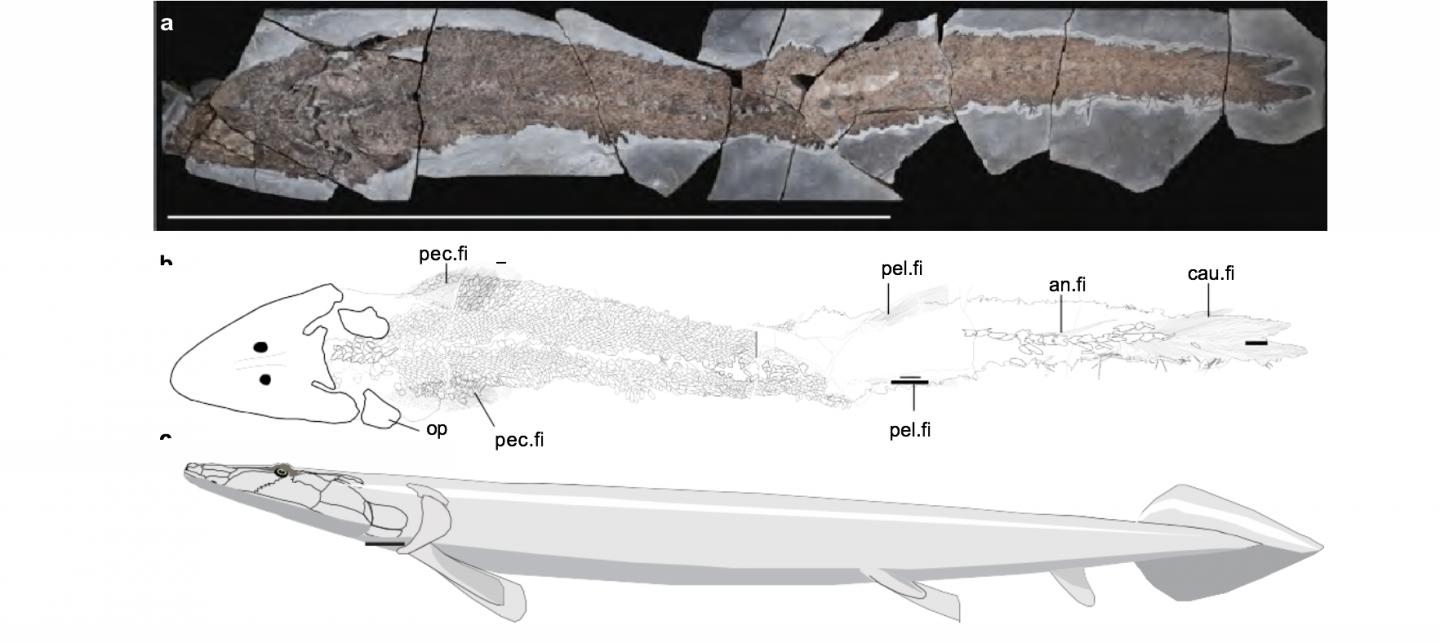An ancient Elpistostege fish fossil has revealed how the human hand evolved from fish fins, the missing evolutionary link in the 'fish to tetrapod transition', as fish began to foray in habitats such as shallow water and land during the Late Devonian period millions of years ago.
This complete fish, around five feet in length, shows the complete arm (pectoral fin) skeleton for the first time in any elpistostegalian fish. The first instance of unequivocally discovered fingers locked in a fin with fin-rays in any known fish. The articulating digits in the fin are like the finger bones found in the hands of most animals. 'Elpistostegalians' are lobe-finned fish and tetrapods from the Middle and Upper Devonian 393-359 million years ago. These include the well-known Tiktaalik from Arctic Canada, known only from incomplete specimens.
If it were not coronavirus season and an election year in America, this would be a big deal. The evolution of the ancestors of fishes into tetrapods - four-legged vertebrates of which humans belong - was one of the most significant events in the history of life. Vertebrates (back-boned animals) were then able to leave the water and conquer land. In order to complete this transition- one of the most significant changes was the evolution of hands and feet.
Complete specimen in dorsal view. Scale bar, 1 m. b, Camera lucida drawing of the postcranial anatomy of the specimen; pectoral fins have been illustrated in their position, although they are only visible ventrally. c, Reconstruction. an.fi, anal fin; cau.fi, caudal fin; op, opercular; pec.fi, pectoral fin; pel.fi, pelvic fin. Credit: Nature
The origin of digits meant developing the capability for the Elpistostege watsoni fish to support its weight in shallow water or for short trips out on land. The increased number of small bones in the fin allows more planes of flexibility to spread out its weight through the fin.
"The other features the study revealed concerning the structure of the upper arm bone or humerus, which also shows features present that are shared with early amphibians. Elpistostege is not necessarily our ancestor, but it is closest we can get to a true 'transitional fossil', an intermediate between fishes and tetrapods," says study co-author Richard Cloutier from Universite du Quebec.
Elpistostege was the largest predator living in a shallow marine to estuarine habitat of Quebec about 380 million years ago. It had powerful sharp fangs in its mouth so could have fed upon several of the larger extinct lobe-finned fishes found fossilized in the same deposits. It was originally named from just a small part of the skull roof, found in the fossiliferous cliffs of Miguasha National Park, Quebec, and described in 1938 as belonging to an early tetrapod.
Another part of the skull of this enigmatic beast was found and described in 1985, demonstrating it was really an advanced lobe-finned fish. The new complete specimen of Elpistostege was discovered in 2010.





Comments